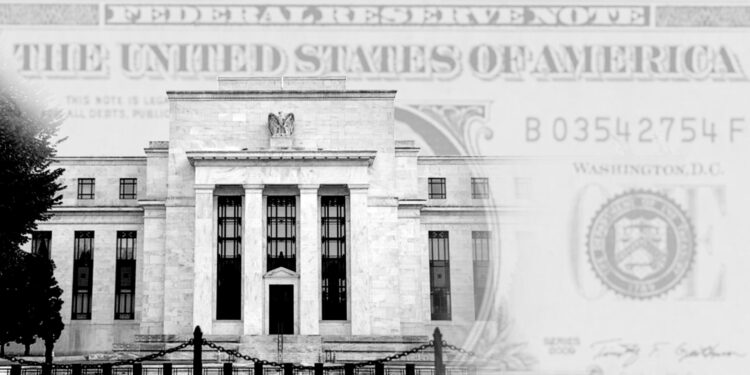Many of the market’s high-flying stocks were built on the Fed’s easy money. That bill is coming due.
Is the bear market of 2022 over? Are we already in the early innings of the next great bull market?
The S&P 500 SPX, -0.16% finished 2022 with a 19% decline (its biggest pullback since 2008). Meanwhile, the Dow Jones Industrial Average DJIA, -0.26% lost 8.8% and the Nasdaq COMP, +0.13% tumbled 33%.
It’s been a different story in 2023, with most U.S. stocks powering ahead. This kind of price action has pundits, experts, and CEOs doubting the possibility of any kind of severe recession and that the Federal Reserve will pull off a “soft landing” after its series of interest rate hikes. A soft landing is a “cyclical slowdown in economic growth that avoids recession.”
Support for this idea comes from the fact that the Fed has raised interest rates significantly since March 2022, lowering inflation to about 6% from around 10%. The labor market has remained strong throughout, with the unemployment rate at 3.4%. Because inflation is on the decline, Wall Street is expecting (hoping?) that rates will begin to decline sooner than later.
So is the upswing for the Nasdaq and many speculative stocks truly a reflection of an improving economy? I’m reminded of this passage from the classic book on investing, “One Up on Wall Street” by Peter Lynch: “In centuries past, people hearing the rooster crow as the sun came up decided that the crowing caused the sunrise. It sounds silly now, but every day the experts confuse cause and effect on Wall Street.”
On Wall Street, the roosters are stock prices. It seems that the experts now are confusing stock gains with the underlying economy’s health.
Fundamentals still matter. The crowing of the rooster (prices going up) does not mean that the fundamentals have improved.
For example, Carvana’s CVNA, +0.10% business model isn’t working. Unless Carvana raises cash through a secondary offering or private bailout, the stock price is likely on the path to zero. The hard part with shorting Carvana is that almost everybody knows Carvana is in trouble. It doesn’t take very much short covering to make the stock go up significantly very quickly. Obviously then, we can ignore the short-squeeze action in Carvana when assessing the health of the U.S. economy and corporate earnings.
Yet the picture doesn’t get much better looking at the earnings and growth from many Nasdaq-traded names. For instance, Alphabet GOOGL, -0.15% is one of my favorites, but its revenue in 2022 was up just10% vs. 41% a year earlier. Even worse, the company’s fourth-quarter 2022 YouTube revenue was down almost 8% from the year-ago quarter. Overall, Alphabet’s EPS fell to $4.56 in 2022 from $5.61 in 2021.
Looking at the fundamentals of the economy itself, it isn’t clear that inflation is actually slowing as much as the market might have you believe. Here is the breakdown from the latest CPI report:
Excluding used cars and trucks, every other category is up, with many rising in double-digits. Looking at this makes us think we are still far from the Fed’s target rate of 2%. The idea that the Fed will stop raising rates and/or start cutting anytime soon seems unlikely to us.
Reckoning with the Fed
We’re not ones to try and game the Fed, but we don’t see a soft landing. Raising the fed funds rate from essentially 0% to 5% in less than a year is significant, and we think it is unlikely that we are seeing the full impact of that change just yet. It is important to remember that we are in Year 1 after almost 14 years of consistent 0% interest rates and quantitative easing.
Many companies such as Carvana have business models that were built on and depended on 0% interest rates and easy money policies. It will take time for the trillions of dollars of liquidity that the Fed pumped into the market over the past 14 years to come out of the market. We are likely in the early stages of a recession and would not rely on continued resilience in the labor market and consumer spending as signs that a recession won’t happen.
No one can time the next recession, and even though we expect one is coming, that doesn’t mean you shouldn’t own stocks or buy more of your favorites on weakness. Every crash usually leads to a great buying opportunity. But we don’t want to chase this market either.
Source: MarketWatch



Recent Comments